Is there anything as primal feeling as eating ribs? I mean, you have to be really going at a carcass to rip apart a rib cage in the pursuit of some good eats. I am personally incredibly thankful for the carnivorous pioneers who discovered the meat fiesta going on along a pig’s rib cage and for passing that wisdom along for future generations to enjoy. Humanity at its finest.
For this cook I am smoking a couple racks of back ribs, more commonly referred to as baby backs. If you aren’t familiar with the differences in cuts of pork this is a great article to help get some learnin’. Around my area the biggest thing to know is the difference between back ribs and spare ribs since it’s what the stores carry. The main difference is pretty much that back ribs are a bit smaller and more tender than spare ribs. I’m normally a spare ribs guy, but the market only had backs this time so here we are.

The first thing I do is a bit of trimming. You can see some fatty stuff, particularly on the bottom right of the rack on the bottom of the pic above, that I’ll trim off. Also, if there is a skirt of meat on the bone side I like to trim that off. Also, check along the edges of the racks to see if there are any small bone fragments, and if so clean those off. The last thing I do for clean up is to pull the membrane off of the bone side of each rack. The best method I’ve used is to take a butter knife to get under the membrane to start. I’ll caution you though, there are a couple layers (not sure if the bottom layer is also membrane, I don’t science) and you only want the top layer to come off so you don’t expose all of the bones. Once you’ve started the separation with the butter knife your best bet is to grip the membrane with a paper towel (it’s slipper otherwise) and hopefully pull it all off in one yank.
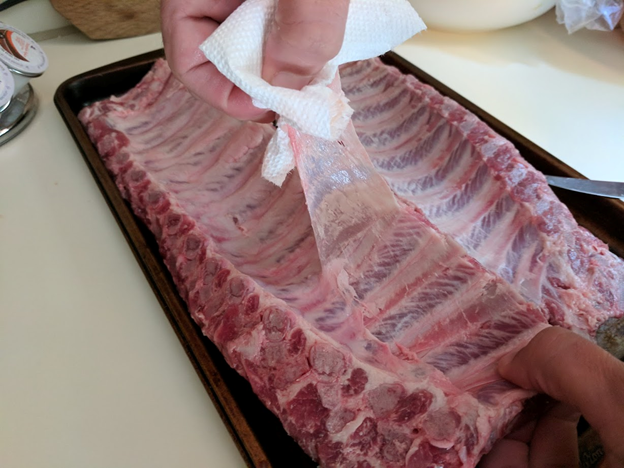
Below is a comparison shot between a rack that still has the membrane (top) and the one it’s been pulled from (bottom).

Once you are done trimming and pulling membranes you are ready to rub. Similar to the pork butt I coat the ribs in a bit of olive oil first so the rub will stick nicely, then I go to town with the dry rub. Again, pork is not a very flavorful meat on its own, so don’t be shy with the rub here.
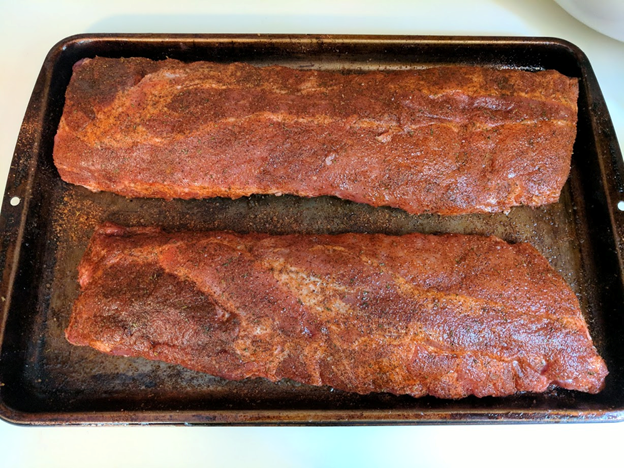
For this cook I prepped and rubbed the ribs a few hours before putting them in the barrel with the idea I’d do a bit of a dry brine. The rub I used has a good amount of salt which after some time brining should increase moisture and tenderness in the finished product. If you’d like some info on dry brining you can read up on it here. I just kept them on the tray and wrapped the whole thing.
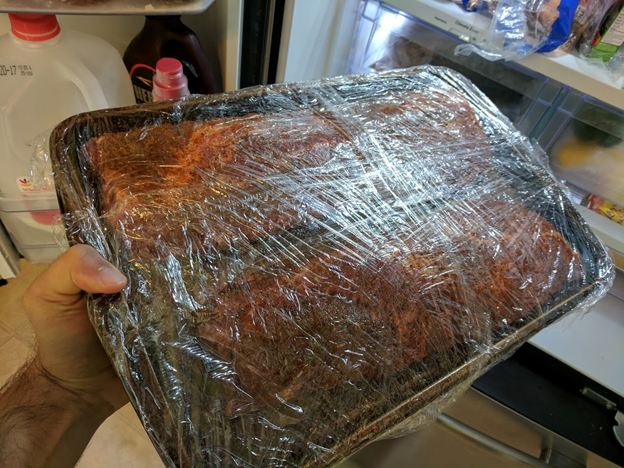
Once it’s time to cook, and the barrel is going, I hang the racks and sit back for a couple hours. After about two hours I’ll go and take a look to see how the bark is forming, and also see if the meat has started to pull back a bit to reveal the bones. This is how I determine how close ribs are to being ready as opposed to monitoring internal temps. At this point I’m looking for a nice mahogany crust and a bit of bone showing.
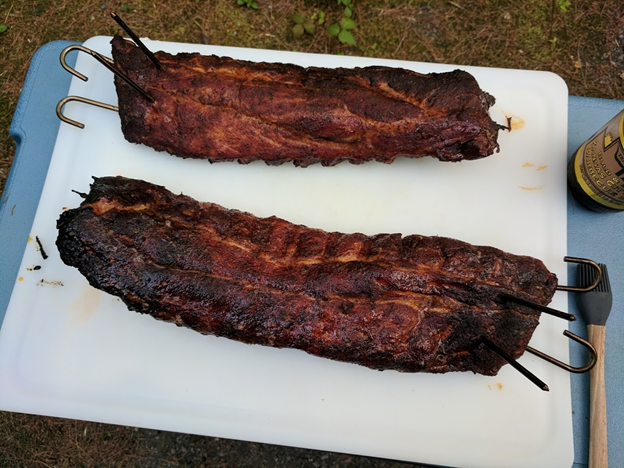
This step is optional depending on how you like your ribs, but I pull the ribs at this point for some sauce. I like to sauce them during the cook so it thickens and caramelizes the sugar a bit, and I don’t add sauce when eating them. Also, if your sauce has been in the refrigerator let it sit out for a while before this to bring it up to room temp. No reason to add cold sauce onto hot ribs you have cooking.
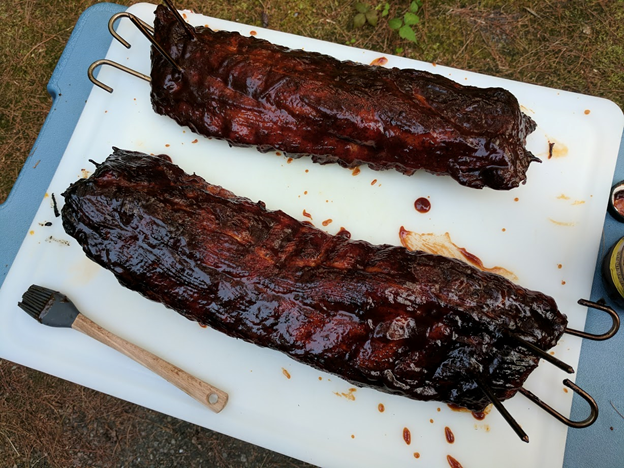
After about another 30 minutes the ribs should be ready. Again, take a look to see if the rib bones are showing – I look for about ¼” of bone showing to consider them ready. After you pull them let them rest for about 20-30 minutes before cutting them. I suck at cutting ribs so I usually flip them so the bone side is up, but if you aren’t terrible at life you can cut them like a man (or woman for our lady readers out there). If all went well you should have some tasty ribs!
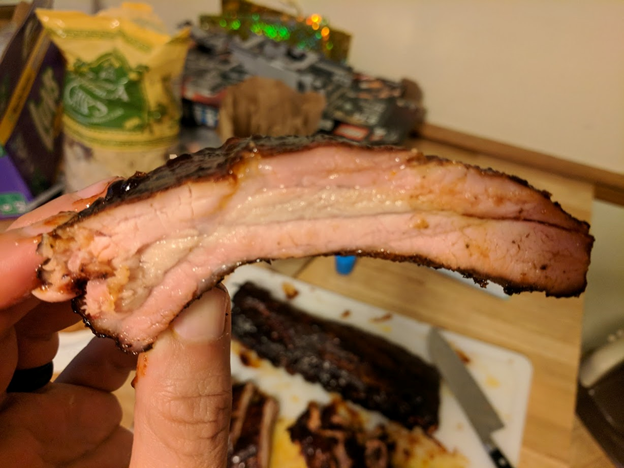
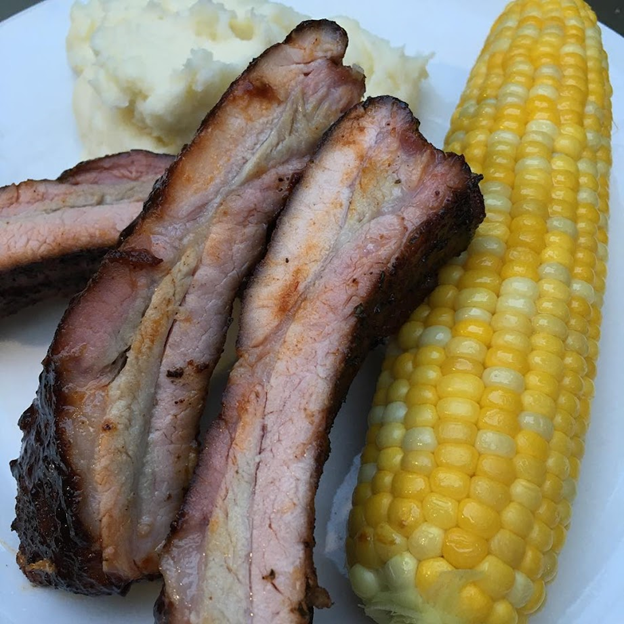
Lilly approves!

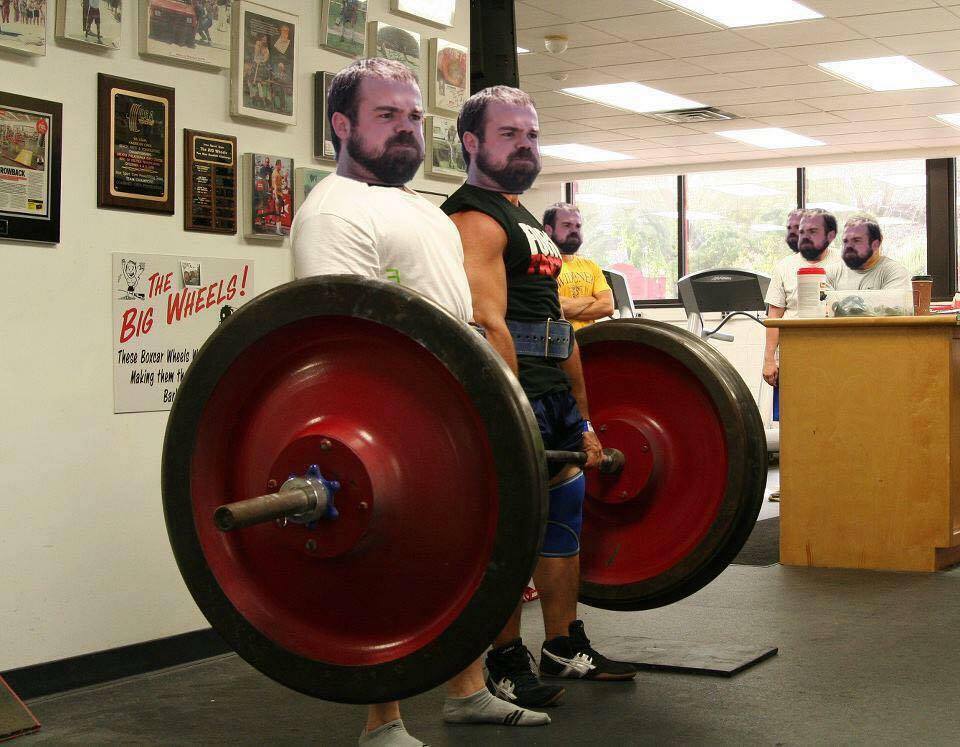 When Paul isn’t busy BBQ’ing, he can be found lifting the train wheels at IronSport with himself, while he & himself also looks on, or helping his wife with her new food blog project.
When Paul isn’t busy BBQ’ing, he can be found lifting the train wheels at IronSport with himself, while he & himself also looks on, or helping his wife with her new food blog project.












